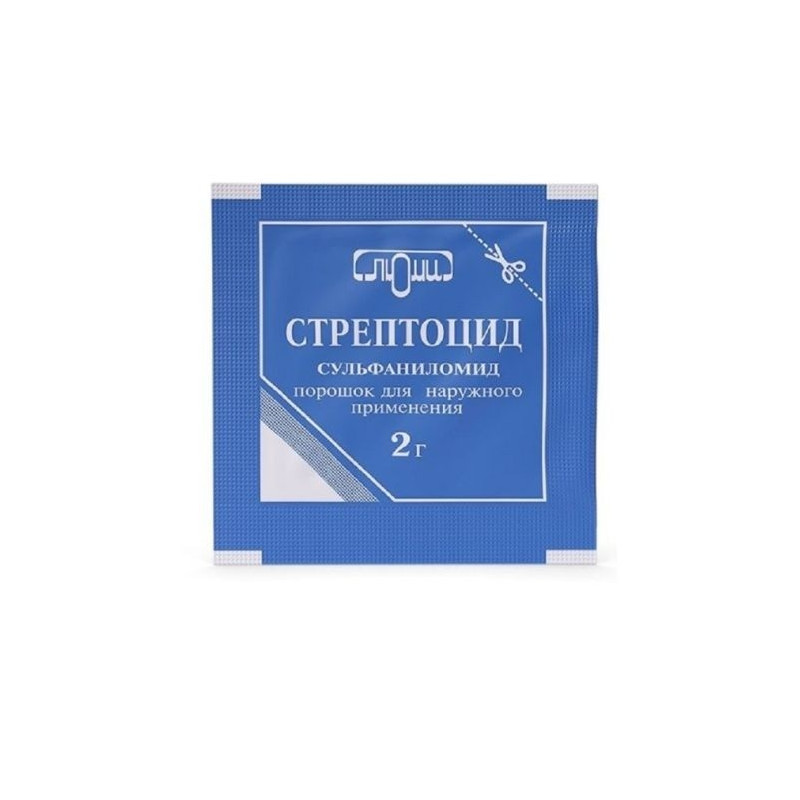



 All payments are encrypted via SSL
All payments are encrypted via SSL
 Full Refund if you haven't received your order
Full Refund if you haven't received your order
Streptocide - powder for external use in 2 g and 5 g sachets; in cans and vials of 5 g;
Streptocide - pills of 0.3 g and 0.5 g, in a package of 10 pieces;
Streptocide - 10% ointment in banks of 25 g and 50 g and in tubes of 25 g; 5% liniment in banks and tubes of 25 g.
The active substance is sulfanilamide: para-aminobenzenesulfamide.
Antimicrobial bacteriostatic agent, sulfanilamide. The mechanism of action of Streptocide is due to competitive antagonism with PABA, inhibition of dihydropteroate synthetase, and impaired synthesis of tetrahydrofolic acid, necessary for the synthesis of purines and pyrimidines. Active against Gram-positive and Gram-negative cocci, Escherichia coli, Shigella spp., Vibrio cholerae, Clostridium perfringens, Bacillus anthracis, Corynebacterium diphtheriae, Yersinia pestis, Chlamydia spp., Actinomyces isinaii, i, i, i, iersinia, foxtheriae, Yersinia pestis, Chlamydia sp. When applied to the skin, it promotes rapid healing of wounds and epithelization of erosions.
Topical treatment: tonsillitis, infected wounds of various etiologies, burns (I-II cent.), Folliculitis, furuncle, carbuncle, acne vulgaris, impetigo, other inflammatory processes of the skin, erysipelas.
Hypersensitivity, anemia, renal / hepatic failure, congenital deficiency of glucose-6-phosphate dehydrogenase, azotemia, porphyria, pregnancy, lactation.
Allergic reactions. With prolonged use of large doses - a systemic effect: headache, dyspepsia, leukopenia, agranulocytosis, nausea, vomiting, crystalluria.
Streptocid is used internally in 0.5-1 g 5-6 times a day. Children dose reduced according to age. The highest doses for adults inside: single - 2 g, daily - 7 g.
Streptocid is topically injected into the wound 5-15 g of sterile powder; topically in the form of 5% liniment or 10% ointment.
In the dark place at a temperature of no higher than 25 ° C.
